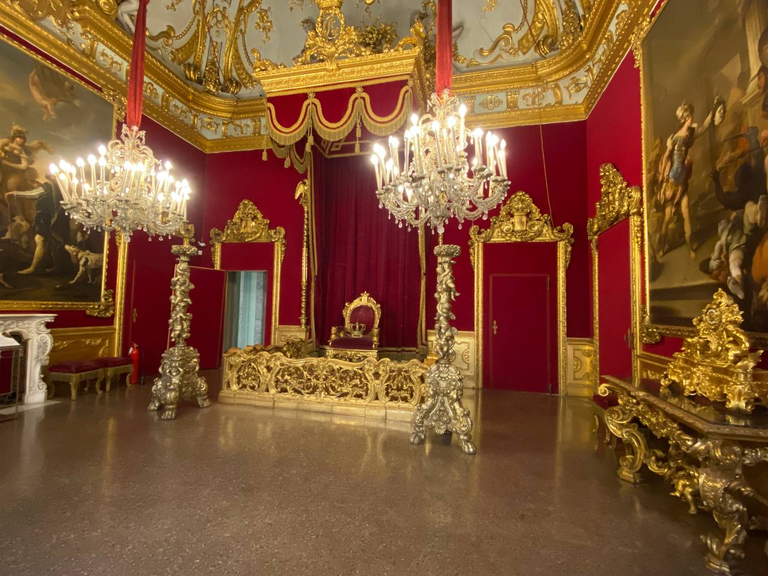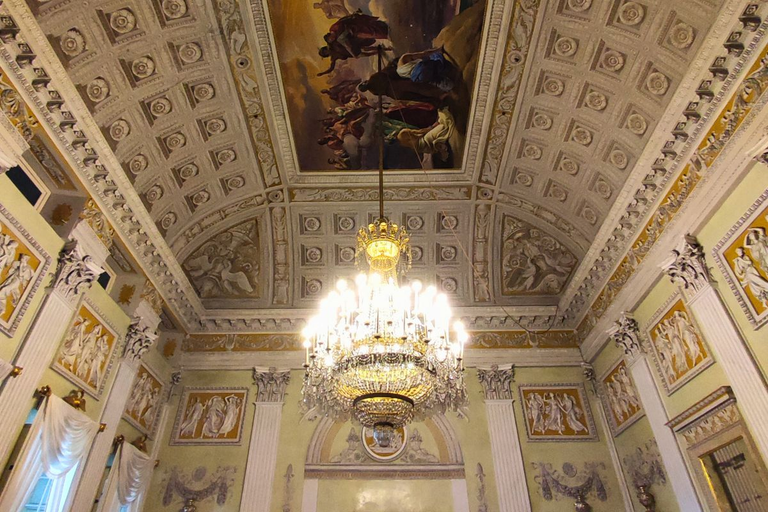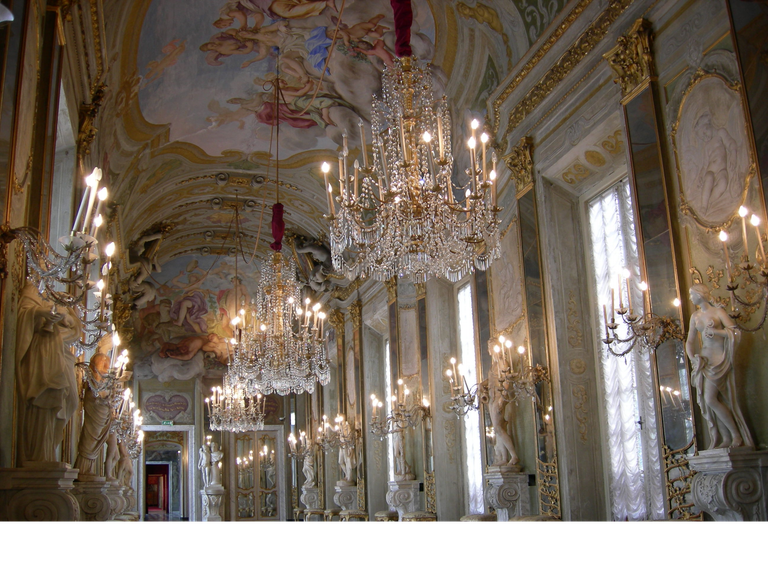
The Royal Palace, or Palazzo Stefano Balbi, is one of the most important historic buildings in Genoa, included among the 42 Palazzi dei Rolli selected and declared a World Heritage Site by UNESCO on July 13, 2006.[2] It is a museum complex consisting of the historic residence, the adjoining garden and the picture gallery, the gallery of the Royal Palace, which constitutes one of the main art collections of the city.
It is a museum complex consisting of the historic residence, the adjoining garden and the picture gallery, the gallery of the Royal Palace that constitutes one of the main art collections of the city.
Located in via Balbi 10, a short distance from the university and the Genoa Piazza Principe railway station, it is part of an important 17th and 18th century architectural complex in the Genoese Baroque style, of which the most representative interiors, from frescoes to stuccoes, from paintings to furniture, have been preserved intact.

The sumptuous palace is part of an important architectural complex of the 17th-17th century in Genoese Baroque style - it is one of the Rolli -, patrician residence of noble families (Balbi, Durazzo, Savoia), is today the Royal Palace Museum and preserves intact the furnishings, works of art and objects of use (17th-19th centuries).
Its rooms also house a rich art gallery that includes works by many Italian and foreign artists (including Van Dyck, Tintoretto, Strozzi) and the Genoese school. The most famous room of the palace, which has come down to us intact in the decoration commissioned by Gerolamo II Durazzo, and created by the most famous painter of the eighteenth century in Genoa, Domenico Parodi, is the famous Gallery of Mirrors.
The decoration, which includes and unites painting, sculpture and architecture, rivaling the famous galleries of the Palazzo Colonna and Palazzo Doria-Pamphili in Rome, and the Galerie des Glaces in Versailles, creates a grand rhetorical celebration of power and wealth. The exhibition includes the display of the Durazzo collection of classical sculptures, mostly original Roman sculptures with missing parts added in the Baroque period, as well as works by Domenico's father, Filippo Parodi.

The four white marble statues, of Bernini origin, have as their subject some of Ovid's metamorphoses: Adonis, Clytia, Venus, Hyacinth. In the background, the marble group with the Rape of Proserpina by the late Baroque sculptor Francesco Maria Schiaffino reinterprets the work of Gianlorenzo Bernini preserved in the Borghese Gallery with the accentuated dynamism typical of Rococo culture.
With over two hundred paintings on display on the two main floors, there are works by the greatest Genoese artists of the seventeenth century such as Bernardo Strozzi, Grechetto, Giovanni Battista Gaulli known as Baciccio, Domenico Fiasella along with masterpieces by Bassano, Tintoretto, Luca Giordano, Antoon van Dyck, Simon Vouet and Guercino.
The pictorial decoration, made directly by Domenico, is inspired by classical antiquity and includes scenes with Apollo and Marsias and with Bacchus and maenads in the headdresses, the Toucher of Venus on the vault and figures with personifications of virtues and ancient emperors.

All the scenes are connected by a single moralizing theme, probably dictated by the Jesuits, whose college, located in front of the palace, was supported by the Durazzo family. The ancient deities in the center of the vault, Venus, Bacchus and Apollo with Marsias, represent the vices that led to the ruin of the great empires of antiquity, represented by the four emperors depicted in the oval medallions, Sardanapalus, Darius, Ptolemy and Romulus Augustulus, while the female figures seated on the cornice represent the allegories of the theological and cardinal virtues that guide the Durazzo family, whose coat of arms stands out in the center of the gallery.
Didactic activities.

The didactic activities at Palazzo Reale - guided tours and workshops - are designed to stimulate the spirit of observation and deduction in the youngest visitors, allowing them to discover new ways of interpreting our historical and artistic heritage.
Children are offered the opportunity to be protagonists and learn about heritage through a direct and engaging approach.
For this reason, the Museum's Educational Service offers a wide range of activities aimed at the knowledge and deepening of historical and artistic topics related to the Royal Palace.
Tips for the visit.

Art lovers should not miss the admirable works by Antoon Van Dyck Portrait of Caterina Balbi Durazzo, painted by Van Dyck at the age of 25, and Christ expiring.
THE ROYAL PALACE OF GENOA IS OPEN TO THE PUBLIC ON THE FOLLOWING DAYS AND TIMES:
TUESDAY from 1.30 p.m. to 7 p.m. (last admission 6.30 p.m.).
WEDNESDAY, THURSDAY, FRIDAY and SATURDAY from 9:00 a.m. to 7:00 p.m. (last admission 6:30 p.m.)
1st and 3rd SUNDAY of the month from 1.30 p.m. to 7.00 p.m. (last admission 6.30 p.m.), closed on other Sundays.
Free admission on the first Sunday of the month.
closed on Monday.



